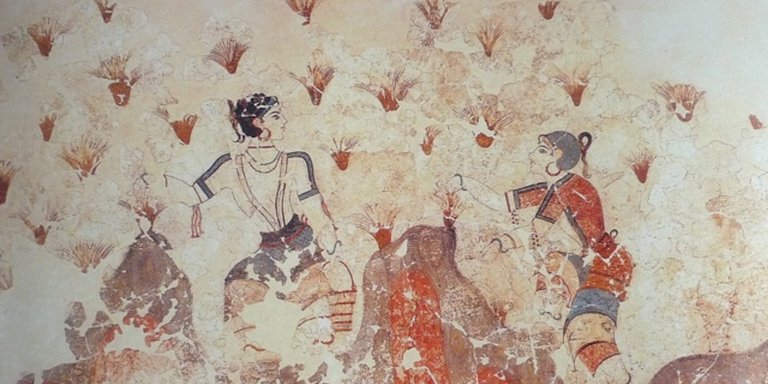The History of Saffron: From Greek Mythology to Modern Times

The most expensive spice in the world has a long and eventful history: saffron was mentioned on Papyrus scrolls as far back as the 16th century BC. The healing properties of saffron were known and recorded even then, so recipes and tinctures for medicinal purposes were passed on. Nervous disorders, ulcers and festering wounds were treated with saffron.
Even the legendary Greek physician Hippocrates recommended the use of saffron against diseases in the 4th century BC. The Phoenicians, an ancient trade and seafaring folk of the 1st millennium BC, also made use of saffron.
In ancient Rome, saffron was sprayed over high-ranked theatre guests to refresh them, and the paths of important people were sprinkled with saffron flowers. Wedding beds were decorated with saffron dust and threads, which explains the Latin phrase “dormivit in sacco croci” (“he slept in a bed of saffron”). The phrase relates to a euphoric state induced by the consumption of saffron, which was like the wedding night. In one Greek legend the phrase was mentioned in connection with the god Zeus.
Nymphs and muses wore saffron yellow clothing in Greek mythology, something that was later copied by female rulers. In various cultures, wedding veils were dyed with saffron, which was also said to rid the wearers of lice. Rich citizens used saffron to turn their fabrics into a golden yellow colour and saffron was used in writings to assimilate golden ink.
In the 14th and 15th centuries, Venice was the capital of the saffron trade. Wars were even fought over the golden spice, such as the Saffron War of Balsthal in 1374. There were high penalties for the tampering with, and diluting of, saffron, even including the death penalty. So-called “saffron watchmen” were employed to check the authenticity of saffron.
In the Middle Ages, saffron was used as a disinfectant and analgesic as well as for births, “women’s troubles”, skin and eye problems and stomach colic. Even antagonists and enemies were eliminated with the help of saffron; because the spice can be lethal in doses of about 10 grams or more. Other rich citizens used saffron as an narcotic.
Today, saffron is used as an exquisite spice, but also in Ayurveda, Chinese Medicine and naturopathy. At MIASA, discover this luxurious miracle cure with its long history, which even inspired the Greek gods!
